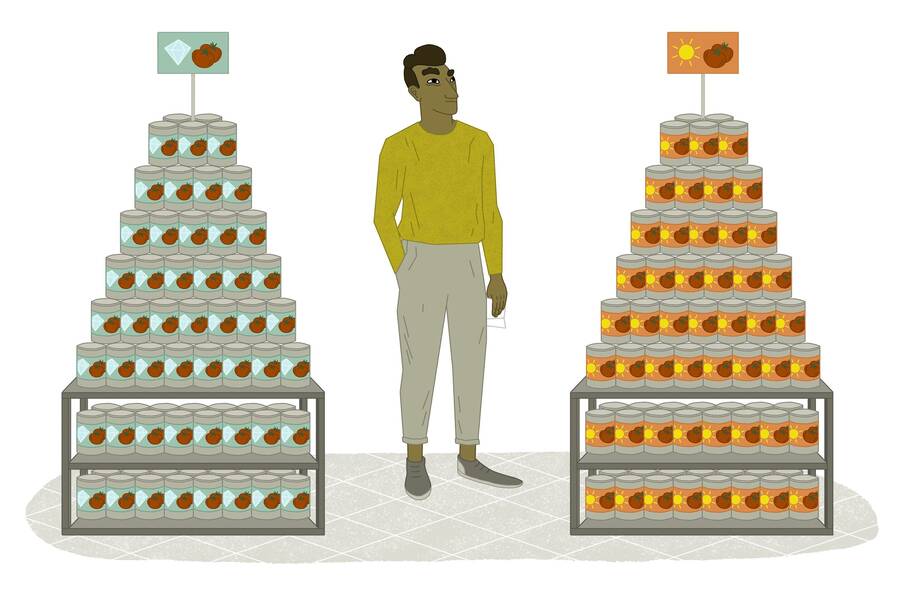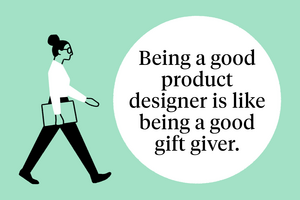Marketing Jul 10, 2017
Podcast: Why Are Rankings and Listicles So Popular?
From “Top 10 Beaches” to “Five Ways to Negotiate a Raise,” the psychology behind effective lists.

Yevgenia Nayberg
Lists are everywhere we look these days. Whether it’s a rundown of the hottest restaurants downtown or a roundup of the day’s biggest news stories, lists and rankings have a way of organizing information so that it sticks with us.
In this month’s Insight podcast, Kent Grayson, an associate professor of marketing at the Kellogg School, provides rules of thumb for companies looking to use ranked lists to their advantage. David Rapp, a professor of psychology at Northwestern, describes how people remember information in lists. And Rachel Davis Mersey, an associate professor of journalism at Northwestern’s Medill School, discusses how social media has seen an explosion in the “listicle” as a way to connect to readers.
Podcast Transcript
[music intro]
Jessica LOVE: David Rapp is a professor of psychology at Northwestern University. He’s also a regular reader of Entertainment Weekly magazine. And when he flips through the pages each month, he knows he’ll always find one thing: lists.
David RAPP: Every issue—I know because I subscribe—every issue is like, “Top Ten Country Songs That Appeared in Movies.”
LOVE: To be clear, he’s not complaining. Lists are fun. You’ve probably read at least one today, whether it was “Top 10 Eye-Catching Train Stations” or “Eight Ways to Organize Your Closet.”
But there are other reasons lists are everywhere from Huffington Post to Bloomberg Businessweek. This format is an extremely appealing and effective way of conveying information. But you can’t just slap any old list together. There are rules to this game, and we’re going to teach them to you.
Welcome to the Kellogg Insight podcast. I’m your host, Jessica Love. Stay with us.
[music interlude]
LOVE: To understand why lists are so appealing, it helps to think about just how much information is constantly coming at us. Here’s Kellogg’s Kent Grayson.
Kent GRAYSON: Life is full of tons of data, and our job, is to try to find heuristics that narrow down the data and help us to make decisions.
LOVE: You can think of heuristics like signals or “rules of thumb”—something you can rely on in order to make good-enough decisions without having to reason through every fact every time.
For example, when we’re trying to decide whether it’s safe to cross a busy street, we might notice that several other people are already crossing. So we interpret that as a signal that it’s safe for us to do the same.
GRAYSON: And the reason why we’re sitting here is because we’ve been reasonably successful with our decisions as we go through life. I’m just talking about: we can cross streets pretty easily. We can drive cars pretty easily. We make decisions that don’t poison us pretty easily. Heuristics are very helpful.
LOVE: Grayson is an associate professor of marketing at Kellogg. He studies the psychology of trust—namely, what causes customers to believe or disbelieve companies’ claims.
Grayson explains that we as customers develop heuristics too, about whether or not to trust what companies say.
GRAYSON: How do consumers understand the tactics that marketers are implementing? Or let me put it in another way: we’re interested in understanding the knowledge that consumers have about marketing tactics and the way in which they employ that knowledge when marketers use that tactic.
LOVE: In research with a colleague, Mathew Isaac, Grayson finds that one of the most trusted tactics is ... you guessed it, a list.
But not just any old list: a ranked list created by a respected third party, like Consumer Reports or Good Housekeeping. Think “Top 5 Beard Trimmers” or “30 Best Cars of 2017.”
So why is being on this kind of list so effective? Grayson points to a belief among customers that marketers aren’t dumb enough to lie about being in a ranked list because these lists are checkable.
GRAYSON: And that checkability, people believe, is a policing mechanism that keeps the marketer from lying about that.
LOVE: When products do earn a spot on a prestigious list, there are certain rules that marketers would be smart to follow to preserve this trust.
Let’s say you own a restaurant. Bon Appetit comes along and ranks your restaurant number 18 on a list of the 20 best in the United States. Logically, it’s better to tell your customers that you made the top 18, not the top 20. Right?
GRAYSON: So actually what we found is that it’s worse. If you’re 18, it’s worse to say that you’re in the top 18 because consumers will be like, “well they’re not even using the rules right and because of that I think they are probably 18.”
LOVE: That’s because consumers have come to expect and prefer that marketers use numbers that end in either zero or five—nice, round, “comfortable” numbers like 15 or 20.
In a series of six studies, Grayson found that if you stick to a number like 20, nobody stops to consider whether you actually came in at 5, 10, 15, whatever. They simply conclude that the product must be good.
But if you deviate from that preference—by using 14, say, or 18—it throws people for a loop and makes them think a little too closely about a product’s place on the list. It makes them think about how your product came in dead last on that list.
[musical interlude]
LOVE: When touting your place on a ranked list, the numbers you use clearly matter. But interestingly, for people just reading straight through a list, order is less important than you might think.
RAPP: We’ve seen in a lot of research that when people are given lists of information, if it’s stuff they’re not familiar with, they have a really hard time remembering the order of what stuff was presented, where things fell on the list.
LOVE: That’s David Rapp, the psychology professor we heard from earlier. When he’s not reading Entertainment Weekly, Rapp studies how we understand and remember information.
He says there’s not a lot of point in fretting that customers will read the list and remember afterward that you came in toward the bottom. We’re just not that good at remembering sequences.
What customers are more likely to remember is that your product was on the list at all—and here you’ll actually have an edge if it appeared at the very beginning or end of the list.
At the beginning of the list, we don’t have much else on our mind. So we’re well-prepared to take in new information and process it on a deep, meaningful level.
RAPP: Presumably that gets it into long-term memory and to permanent memory, and stuff that appears later in the list that you can still retrieve because it’s in short term memory, it’s currently accessible, lends those items better retention, makes it easier to recall those items later, and the stuff in the middle just kind of gets lost.
LOVE: Another thing to understand about lists? The shorter they are, the more likely people are to believe them.
RAPP: There’s a series of studies that shows when you ask people to make longer lists, they tend not to think that information is as true as if they made shorter lists.
LOVE: So if you ask a group of people to come up with three reasons why the US entered World War II and a second group to come up with seven reasons, the group that comes up with seven doesn’t believe that list as much as the group that came up with three.
RAPP: It’s harder to come up with seven and people tend to think, “Well, if it’s harder to come up with seven, maybe those things aren’t as true.”
LOVE: He also stresses that the more lists a product appears on, the more likely people are to remember the product—and believe claims about it.
RAPP: What we see a lot, in social media, in our lab, is, as you present information more often, people think it’s more true. So if you start to see lists with the same items in them, “Top Movies of 2017” based on reviewers’ comments, based on Rotten Tomatoes, you start to see the same movies. You might start to think, “Those really are better movies,” because you’ve seen them repeated and the degree to which they’re repeated makes it easier to remember them in memory and then you think it’s true. Because if you can recall it easily, then you believe it’s right.
LOVE: But there may come a day when no matter how short lists are, and no matter where your product ranks, lists will stop being seen as credible. If companies or brands start lying and saying that their products are on some impressive list when they really aren’t.… Well, here’s Kellogg’s Kent Grayson again.
GRAYSON: Eventually consumers will start throwing up their hands and say, “I used to think that was a signal of credible and believable marketing information, but now I see people are kind of screwing around with it, and I no longer see it as useful.”
[musical interlude]
LOVE: Okay, so at least for now, ranked lists are a great marketing tool for the products or companies that appear on them. But what happens when the list itself is the product?
Rachel Davis MERSEY: Now, with the emergence of social media, we’ve seen this trend called listicles.
LOVE: That’s Rachel Davis Mersey, an associate professor of journalism at Northwestern’s Medill School. She’s talking about those highly readable, often silly lists-slash-articles you see on sites like Buzzfeed. Like “21 Toys You Constantly Played with if You Were a Kid in the ‘90s” or “33 Tweets That’ll Make Zero Sense if You’re Not British.”
These relatively new diversions have old roots, she says.
MERSEY: Interestingly, listicles have become a thing, but the history of list-making in journalism is actually much longer than the term, “listicles.”
LOVE: Mersey points out that journalists have long used a variety of formats to structure and categorize the ideas they’re writing about.
MERSEY: I just reviewed a magazine for the National Magazine Awards that did the ways to clean your house in the alphabet. So it would be, “A, how to clean apples. You should use a vegetable spray. B, how to clean your bathtub. You should go buy Clorox. C, think about cleaning your car. You should leave a bucket off to the side.” That has been used as an organizing principle in the way that the human brain craves organizing principles.
LOVE: But social-media listicles do more than just appeal to our desire for organization.
MERSEY: I think journalists are constantly looking for a way to connect with people’s identities, which can often take the form of lists.
LOVE: So when you read a list titled, “20 Infuriating Things That Happen in Every College Class” or “at Every Family Reunion,” or “in Every Office,” the point isn’t just to entertain you. It’s also to appeal to your identity as a college student, or family member, or office worker. Seeing yourself in those lists gives you a sense of connection—and makes it more likely you’ll share the list in hopes of increasing that connection.
MERSEY: I think when journalists used to think to themselves, “How do we get people to talk about this in the office around the water cooler?” the new version of that is, “How do we get someone to share this on social media?” And then how does that spur a conversation, and I think lists are entirely designed to do that. “Oh, my goodness, did you see number seven?” In a list, people can find lots of different connection points.
LOVE: In a social-media-soaked world, that desire for connection and organization is so great that listicles have even started popping up in places you might not expect, like mainstream news outlets.
MERSEY: Morning television will often end with, “The three or five stories you need to know before going out the door.”
You wouldn’t ordinarily think of The New York Times’ morning briefing as a listicle, but it is most certainly a list.
I think people who think negatively about listicles only think about the BuzzFeed, you know, “What Kind of Cat Are You?” I think that, unfortunately, it bypasses what’s really important, which is the organizing principle in which we frame the world for people. I think the best news organizations are using the inspiration of listicles to tell stories more effectively.
[music interlude]
LOVE: This program was produced by Jessica Love, Fred Schmalz, Emily Stone, and Michael Spikes. It was written by Anne Ford.
Special thanks to our guests, Kent Grayson, David Rapp, and Rachel Davis Mersey.
You can stream or download our monthly podcast from iTunes, Google Play, or from our website, where you can read more about marketing and trust. Visit us at insight.kellogg.northwestern.edu. We’ll be back next month with another Kellogg Insight podcast.



